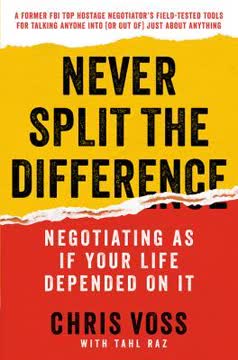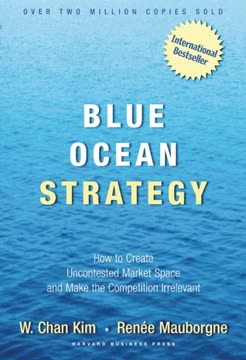मुख्य निष्कर्ष
1. संघर्ष को अपनाएं: CEO की चुनौतियाँ अनिवार्य हैं
संघर्ष ही महानता का स्रोत है।
CEO की यात्रा कठिन होती है। हर उद्यमी आत्म-संदेह, भय और प्रतीत होने वाली अजेय चुनौतियों के क्षणों का सामना करता है। ये संघर्ष केवल सामान्य नहीं हैं; ये विकास और सफलता के लिए आवश्यक हैं।
धैर्य महत्वपूर्ण है। सबसे सफल CEOs वे होते हैं जो तूफानों का सामना कर सकते हैं, अपनी गलतियों से सीखते हैं, और आगे बढ़ते रहते हैं। वे समझते हैं कि असफलताएँ अस्थायी होती हैं और प्रत्येक चुनौती सुधार और नवाचार का एक अवसर प्रस्तुत करती है।
दृष्टिकोण बनाए रखें। याद रखें कि सबसे सफल कंपनियों और CEOs ने भी गंभीर परिस्थितियों का सामना किया है। समस्याओं को एक समय में हल करने पर ध्यान केंद्रित करें, और अपनी जिम्मेदारियों का बोझ आपको जकड़ने न दे। अपने चारों ओर सहायक लोगों को रखें जो मार्गदर्शन कर सकें और बोझ साझा कर सकें।
2. कठिन निर्णय लें और परिणामों की जिम्मेदारी लें
यदि आप एक कंपनी चलाते हैं, तो आपको अत्यधिक सकारात्मक रहने के लिए मनोवैज्ञानिक दबाव का अनुभव होगा।
निर्णय लेने में साहस। CEOs को अक्सर अधूरी जानकारी के साथ कठिन विकल्प बनाने होते हैं। इन निर्णयों को तेजी से लेना और उनके प्रति खड़े रहना कंपनी की सफलता के लिए महत्वपूर्ण है।
पारदर्शिता आवश्यक है। अपनी टीम के साथ संवाद करते समय, चुनौतियों और जोखिमों के बारे में ईमानदार रहें। मुद्दों को मीठा बनाना या कठिन वार्तालापों से बचना केवल विश्वास को कमजोर करेगा और समस्या समाधान में बाधा डालेगा।
गलतियों से सीखें। यह पहचानें कि हर निर्णय सही नहीं होगा। कुंजी यह है कि गलतियों से सीखें, जल्दी अनुकूलित करें, और आगे बढ़ें। एक ऐसी संस्कृति को प्रोत्साहित करें जहाँ असफलता को सफलता की ओर एक कदम के रूप में देखा जाए, न कि दोष या दंड का कारण।
3. एक विश्वस्तरीय टीम बनाएं और मजबूत संस्कृति को बढ़ावा दें
आप महान लोगों के बिना एक महान कंपनी नहीं बना सकते।
कमजोरी की कमी के लिए नहीं, बल्कि ताकत के लिए भर्ती करें। उन व्यक्तियों की तलाश करें जो विशिष्ट क्षेत्रों में उत्कृष्ट हैं, न कि केवल सामान्य रूप से पर्याप्त हैं। विशेषज्ञों की एक टीम सामान्य ज्ञान वाले समूह से बेहतर प्रदर्शन करेगी।
उत्कृष्टता की संस्कृति बनाएं। उच्च मानक निर्धारित करें और सभी को जिम्मेदार ठहराएं। खुली संवाद, निरंतर सीखने, और कर्मचारियों के बीच स्वामित्व की भावना को प्रोत्साहित करें।
- विचारों की विविधता को बढ़ावा दें
- सहयोग और ज्ञान साझा करने को प्रोत्साहित करें
- उत्कृष्ट प्रदर्शन को पहचानें और पुरस्कृत करें
प्रतिभा विकास में निवेश करें। कंपनी के भीतर विकास और उन्नति के अवसर प्रदान करें। यह न केवल समग्र प्रदर्शन में सुधार करता है, बल्कि शीर्ष प्रतिभा को बनाए रखने में भी मदद करता है।
4. लोगों, उत्पादों और लाभों को प्राथमिकता दें, इस क्रम में
लोगों, उत्पादों और लाभों का ध्यान रखें—इस क्रम में।
पहले लोग। आपके कर्मचारी आपके सबसे मूल्यवान संपत्ति हैं। उनके कल्याण, विकास और संतोष में निवेश करें। खुश, प्रेरित कर्मचारी अधिक उत्पादक और नवोन्मेषी होते हैं।
उत्पाद की गुणवत्ता पर ध्यान दें। एक महान उत्पाद किसी भी सफल व्यवसाय की नींव है। प्रतिस्पर्धा से आगे रहने के लिए निरंतर सुधार और नवाचार करें।
लाभ स्वाभाविक रूप से आएंगे। जब आप अपने लोगों का ध्यान रखते हैं और उत्कृष्ट उत्पाद प्रदान करते हैं, तो वित्तीय सफलता एक स्वाभाविक परिणाम बन जाती है। यह दीर्घकालिक दृष्टिकोण स्थायी व्यवसायों का निर्माण करता है।
5. दृष्टि, महत्वाकांक्षा और निष्पादन के साथ नेतृत्व करें
औसत और जादुई होने के बीच का अंतर अक्सर इस बात का अंतर होता है कि लोगों को रचनात्मक जोखिम लेने दिया जाए या उन्हें बहुत कसकर जिम्मेदार ठहराया जाए।
एक प्रेरक दृष्टि व्यक्त करें। एक नेता के रूप में, आपको यह स्पष्ट चित्रण करना चाहिए कि कंपनी कहाँ जा रही है और यह क्यों महत्वपूर्ण है। यह दृष्टि आपकी टीम को प्रेरित और प्रोत्साहित करनी चाहिए।
सही प्रकार की महत्वाकांक्षा को बढ़ावा दें। कर्मचारियों को व्यक्तिगत लाभ के बजाय कंपनी की सफलता को प्राथमिकता देने के लिए प्रोत्साहित करें। यह सहयोग और साझा उद्देश्य की संस्कृति का निर्माण करता है।
निष्पादन में निरंतरता बनाए रखें। दृष्टि और महत्वाकांक्षा का कोई अर्थ नहीं है यदि विचारों को वास्तविकता में बदलने की क्षमता नहीं है। अपने रणनीति के प्रभावी निष्पादन के लिए प्रणालियाँ और प्रक्रियाएँ विकसित करें।
6. अपनी कंपनी को स्केल करने की कला में महारत हासिल करें
संगठनात्मक डिज़ाइन वह आर्किटेक्चर है जिसके माध्यम से कंपनी बाहरी दुनिया के साथ संवाद करती है।
विकास की चुनौतियों की भविष्यवाणी करें। जैसे-जैसे आपकी कंपनी बढ़ती है, अपने संगठनात्मक ढांचे, संचार प्रक्रियाओं और प्रबंधन शैली को अनुकूलित करने के लिए तैयार रहें।
स्केलेबल सिस्टम लागू करें। ऐसे प्रक्रियाएँ और उपकरण विकसित करें जो तेजी से विकास को समायोजित कर सकें बिना दक्षता या गुणवत्ता का बलिदान किए।
- मुख्य प्रक्रियाओं को मानकीकृत करें
- प्रौद्योगिकी अवसंरचना में निवेश करें
- स्पष्ट भूमिकाएँ और रिपोर्टिंग संरचनाएँ बनाएं
विशेषीकरण और लचीलापन का संतुलन बनाए रखें। जैसे-जैसे आप बढ़ते हैं, आपको विशेषज्ञों को नियुक्त करने की आवश्यकता होगी, लेकिन बदलती बाजार स्थितियों के अनुकूल होने के लिए पर्याप्त लचीलापन बनाए रखें।
7. बदलती परिस्थितियों के अनुसार अपने नेतृत्व शैली को अनुकूलित करें
व्यापार में शांति का समय उन समयों का मतलब है जब एक कंपनी अपने मुख्य बाजार में प्रतिस्पर्धा पर एक बड़ा लाभ रखती है, और उसका बाजार बढ़ रहा है। युद्ध के समय, एक कंपनी एक निकटतम अस्तित्व संकट का सामना कर रही होती है।
विभिन्न व्यापार जलवायु को पहचानें। समझें कि आपकी कंपनी "शांति के समय" (स्थिर विकास) में है या "युद्ध के समय" (अस्तित्व के खतरे का सामना कर रही है)।
अपने दृष्टिकोण को समायोजित करें। शांति के समय में, अवसरों का विस्तार करने और रचनात्मकता को बढ़ावा देने पर ध्यान केंद्रित करें। युद्ध के समय में, जीवित रहने और त्वरित, निर्णायक कार्रवाई पर ध्यान केंद्रित करें।
लचीलापन विकसित करें। सबसे अच्छे CEOs विभिन्न नेतृत्व शैलियों के बीच परिस्थितियों के अनुसार संक्रमण कर सकते हैं। विभिन्न स्थितियों को प्रभावी ढंग से संभालने के लिए कौशल की एक श्रृंखला विकसित करें।
8. प्रबंधन में जिम्मेदारी और रचनात्मकता का संतुलन बनाए रखें
औसत और जादुई होने के बीच का अंतर अक्सर इस बात का अंतर होता है कि लोगों को रचनात्मक जोखिम लेने दिया जाए या उन्हें बहुत कसकर जिम्मेदार ठहराया जाए।
स्मार्ट जोखिम लेने को प्रोत्साहित करें। एक ऐसा वातावरण बनाएं जहाँ कर्मचारी नवोन्मेषी विचारों को प्रस्तावित और आगे बढ़ाने में सुरक्षित महसूस करें, भले ही वे असफल हो सकते हैं।
स्पष्ट अपेक्षाएँ स्थापित करें। मापने योग्य लक्ष्यों को निर्धारित करें और परिणामों के लिए लोगों को जिम्मेदार ठहराएं, लेकिन उन्हें उन लक्ष्यों को प्राप्त करने के तरीके में लचीला रहें।
असफलताओं से सीखें। जब रचनात्मक जोखिम सफल नहीं होते, तो शामिल लोगों को दंडित करने के बजाय मूल्यवान सबक निकालने पर ध्यान केंद्रित करें। यह दृष्टिकोण निरंतर सुधार और नवाचार की संस्कृति को बढ़ावा देता है।
9. अपनी कंपनी को बेचने की जटिलताओं को नेविगेट करें
यदि (a) आप एक बहुत बड़े बाजार में बहुत जल्दी हैं और (b) आपके पास उस बाजार में नंबर एक बनने का अच्छा मौका है, तो आपको स्वतंत्र रहना चाहिए।
बाजार की संभावनाओं का मूल्यांकन करें। यह तय करते समय कि बेचना है या स्वतंत्र रहना है, अपने बाजार के आकार और विकास की गति पर विचार करें।
प्रतिस्पर्धात्मक स्थिति का आकलन करें। यह निर्धारित करें कि आपकी कंपनी बाजार में नेता बनने (या बने रहने) की कितनी संभावना है। यह बेचना या स्वतंत्र रूप से बढ़ना तय करने में महत्वपूर्ण है।
समय और मूल्यांकन पर विचार करें। संभावित बिक्री में मूल्य अधिकतम करने के लिए उद्योग के रुझानों और आपकी कंपनी के विकास के चरण के प्रति जागरूक रहें। कभी-कभी, भविष्य के विकास के लिए इंतजार करना काफी अधिक लाभ दे सकता है।
अंतिम अपडेट:
FAQ
What's "The Hard Thing About Hard Things" about?
- Guide for entrepreneurs: "The Hard Thing About Hard Things" by Ben Horowitz is a guide for entrepreneurs and CEOs on navigating the challenges of building and running a business.
- Personal experiences: Horowitz shares his personal experiences as a CEO and venture capitalist, providing insights into the struggles and solutions he encountered.
- No easy answers: The book emphasizes that there are no easy answers or formulas for dealing with complex business challenges, highlighting the importance of resilience and adaptability.
Why should I read "The Hard Thing About Hard Things"?
- Real-world insights: The book offers real-world insights from someone who has successfully navigated the ups and downs of the tech industry.
- Practical advice: It provides practical advice on handling difficult situations, such as layoffs, executive firings, and company culture issues.
- Inspirational stories: Horowitz's stories of perseverance and overcoming adversity can be inspiring and motivating for entrepreneurs and business leaders.
What are the key takeaways of "The Hard Thing About Hard Things"?
- Embrace the struggle: Horowitz emphasizes that the struggle is an inherent part of building a business and that leaders must learn to navigate it effectively.
- Importance of transparency: The book highlights the importance of being transparent with your team, especially during difficult times.
- Focus on people: Taking care of your people is crucial for long-term success, stressing the importance of hiring, training, and retaining the right talent.
What are the best quotes from "The Hard Thing About Hard Things" and what do they mean?
- "There is no recipe for really complicated, dynamic situations." This underscores the book's theme that there are no easy solutions to complex business problems.
- "The Struggle is where greatness comes from." Horowitz highlights that enduring and overcoming the struggle is what leads to success and greatness.
- "If you are going to eat shit, don’t nibble." This advises leaders to confront problems head-on rather than avoiding or minimizing them.
How does Ben Horowitz suggest handling layoffs?
- Be clear and honest: Horowitz advises being clear about the reasons for layoffs and communicating them honestly to the team.
- Train managers: Ensure that managers are trained to handle layoffs with empathy and professionalism.
- Address the company: The CEO should address the entire company to provide context and reassurance.
What is "The Struggle" according to Ben Horowitz?
- Definition of The Struggle: "The Struggle" refers to the difficult, often overwhelming challenges that entrepreneurs and CEOs face when building a business.
- Inevitable part of leadership: Horowitz emphasizes that The Struggle is an inevitable part of leadership and that every great entrepreneur experiences it.
- Source of greatness: The Struggle is where leaders find the strength to overcome obstacles and achieve greatness.
How does Ben Horowitz define a good company culture?
- Trust and transparency: A good company culture is built on trust and transparency, where employees feel informed and valued.
- Focus on people: Taking care of employees is a priority, ensuring they have the resources and support needed to succeed.
- Alignment with values: A strong culture aligns with the company's values and mission, creating a sense of purpose and belonging for employees.
What is the significance of "Lead Bullets" in "The Hard Thing About Hard Things"?
- No silver bullets: Horowitz uses the term "Lead Bullets" to emphasize that there are no quick fixes or magical solutions to business problems.
- Focus on fundamentals: The concept encourages focusing on the fundamentals and making incremental improvements rather than seeking shortcuts.
- Example from Netscape: Horowitz shares an example from his time at Netscape, where they had to improve their product's performance through hard work.
What is the "Peacetime CEO/Wartime CEO" concept in "The Hard Thing About Hard Things"?
- Different leadership styles: Horowitz describes two distinct leadership styles: peacetime and wartime.
- Adapting to circumstances: A CEO must be able to switch between these styles based on the company's situation.
- Examples in the book: Horowitz uses examples like Steve Jobs and Andy Grove to illustrate how different situations require different leadership approaches.
How does Horowitz suggest managing your own psychology as a CEO?
- Managing stress: Horowitz emphasizes the importance of managing one's own psychology, as being a CEO is inherently stressful.
- Avoiding isolation: CEOs often feel isolated due to the nature of their role, and Horowitz suggests building a support network of peers.
- Facing the pain: He advises not to avoid difficult situations but to face them head-on, which is crucial for overcoming leadership challenges.
How does Ben Horowitz approach hiring executives?
- Know what you want: Horowitz stresses the importance of knowing exactly what you need in an executive before starting the hiring process.
- Run a thorough process: Conduct a thorough interview process that tests for the desired criteria.
- Make a lonely decision: Ultimately, the CEO must make the final decision based on all the information gathered.
What advice does Horowitz give on deciding whether to sell your company?
- Logical analysis: Horowitz advises considering whether the market is large and if the company has a good chance of being number one.
- Emotional factors: Selling a company is an emotional decision, and Horowitz suggests muting emotions to make a rational choice.
- Case study of Opsware: Horowitz shares his experience with selling Opsware, highlighting the factors he considered and the emotional challenges he faced.
समीक्षाएं
द हार्ड थिंग अबाउट हार्ड थिंग्स को उद्यमिता और सीईओ की चुनौतियों पर इसके ईमानदार, अनुभव-आधारित सलाह के लिए ज्यादातर सकारात्मक समीक्षाएँ मिलती हैं। पाठक होरोविट्ज़ के कठिन निर्णयों और प्रबंधन मुद्दों पर स्पष्ट दृष्टिकोण की सराहना करते हैं। यह पुस्तक विशेष रूप से इसके व्यावहारिक अंतर्दृष्टियों और वास्तविक जीवन के उदाहरणों के लिए प्रशंसा प्राप्त करती है। कुछ लोग इसकी संरचना और दोहराव की आलोचना करते हैं, जबकि अन्य को इसमें शामिल हिप-हॉप उद्धरण असंगत लगते हैं। कई समीक्षक इसे सीईओ और उद्यमियों के लिए अनिवार्य पढ़ाई मानते हैं, हालांकि सामान्य पाठकों के लिए यह कम प्रासंगिक है। कुल मिलाकर, इसे एक तकनीकी स्टार्टअप का नेतृत्व करने की वास्तविकताओं को समझने के लिए एक मूल्यवान संसाधन माना जाता है।
Similar Books















